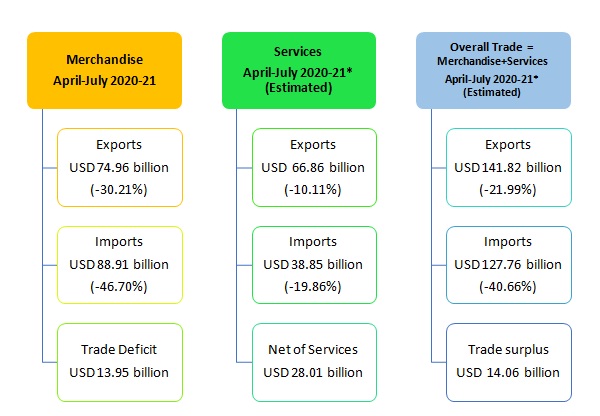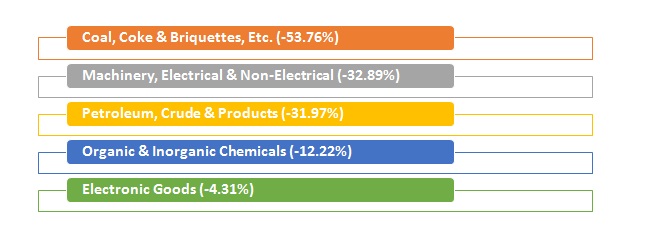Contents
- Indigenisation portal SRIJAN
- India’s Foreign Trade: July2020
- Indigenous Air Unique-quality Monitoring (AUM)
- He-enhanced cool bright stars discovered
INDIGENISATION PORTAL SRIJAN
Focus: GS-III Industry and Infrastructure
Why in news?
The Ministry of Defence launched Department of Defence Production, MoD’s portal SRIJAN which is a ‘one stop shop online portal that provides access tothe vendors to take up items that can be taken up for indigenization.
‘SRIJAN’ portal
- On this portal, DPSUs/OFB/SHQs can display their items which they have been importing or are going to import which the Indian Industry can design, develop and manufacture as per their capability or through joint venture with OEMs.
- The Indian Industry will be able to show their interest. The concerned DPSUs/OFB/SHQs, based on their requirement of the items and their guidelines & procedures will interact with the Indian industry for indigenization.
- Self-reliance in Defence manufacturing has been envisioned not only as domestic requirement but also with export perspective and can be made possible with concerted efforts.
INDIA’S FOREIGN TRADE: JULY2020
Focus: GS-III Indian Economy
Why in news?
- India’s overall exports (Merchandise and Services combined) in April-July 2020-21 showed a negative growth of (-) 21.99per cent over the same period last year.
- Overall imports in April-July 2020-21 showed a negative growth of (-)
- 40.66per cent over the same period last year.
Details
- Major commodities which have recorded positive growth during July 2020 vis-à-vis July 2019 include Cereals, Rice, Iron Ores, Oil Seeds, Meat & Dairy Products and Fruits & Vegetables, etc.
- Major commodities which have recorded negative growth during July 2020 vis-à-vis July 2019 are Petroleum products, Jewellery & Gems, Tobacco, Leather etc.
- Major commodity groups of import showing negative growth in July2020 over the corresponding month of last year are Crude Oil and Non-Oil Imports, Machinery, etc.


INDIGENOUS AIR UNIQUE-QUALITY MONITORING (AUM)
Focus: GS-III Science and Technology
Why in news?
An indigenous photonic system for real-time remote monitoring of air quality parameters was developed with support from Department of Science and Technology’s Clean Air Research Initiative.
Air Unique-quality Monitoring (AUM)
- The AUM system (patent pending) is an innovative application of the principles of laser backscattering, statistical mechanics, optoelectronics, artificial intelligence, machine/deep learning, and Internet of Things.
- It can identify, classify, and quantify various pollutants simultaneously (of orders of less than one part per billion) and meteorological parameters, with very high precision, sensitivity and accuracy.
- It has been found to be highly sensitive and accurate and capable of simultaneous detection and quantification of all air quality parameters and offers a number of merits over any of the currently available conventional systems.
- It is portable, compact, low powered and economical, works on plug and play system, requires no setting uptime, and no additional civil infrastructure for housing.
- This system can boost the nation’s efforts towards self-reliance in high-end technologies and can additionally be instrumental in supporting the endeavours in improving the nation’s health and economy.
Why was this necessary?
- World Health Organisation (WHO)’s reports show that the worsening state of poor air quality is responsible for more than 7.5 million fatalities worldwide annually.
- This highlights the necessity for accurate, yet cost-effective monitoring of air quality parameters as monitoring is critical to solution.
- The current systems and technologies used for air quality monitoring are prohibitively expensive for wider deployment.
- This underlines the need for development of systems for real-time remote monitoring of relevant air quality parameters.
HE-ENHANCED COOL BRIGHT STARS DISCOVERED
Focus: GS-III Science and Technology
Why in news?
A team of scientists from the Indian Institute of Astrophysics (IIA) studied numerous stars of this cluster and discovered He-enhanced cool bright stars among the metal-rich sample of Omega Centauri.
Details and Significance
- Though there are estimations of He-enhancement in the H-core burning main-sequence stars (like Sun) of Omega Cen, this is the first-ever spectroscopic determination of He-abundance in Omega Centauri.
- The study provides a very important clue for the origin of the He-enhanced population establishing that these are the second generation of stars formed from the metal-rich and He-enhanced material from the first generation of stars.
Background
- Globular clusters are the stellar systems with millions of stars formed from the same gaseous cloud.
- Hence, usually, the stars formed will be homogeneous in their chemical composition of elemental abundances.
- But there are clusters which deviate from this norm. One is being Omega Centauri, the brightest and the largest globular cluster in our Galaxy, the Milky Way.
- The different stars of Omega Centauri do not show the same metal content, a parameter that indicates its age, but a large range in it.
- Due to the anomalous elemental abundances, the formation scenario may be different from normal.
- Normally, the abundances are derived using the assumption that He is one-tenth of the H-abundance.
- While in most stars, H is the most abundant element, if the abundance of H is reduced, correspondingly He abundance increases because the sum of H and He is a constant, and the other heavier elements are in traces.
- However, they found that the H-atomic spectral lines are very strong in the spectra of stars, and the reliable measurement of abundance was not possible from such lines.



